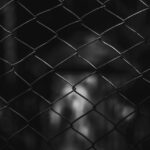
As outlined in a previous Mental Elf blog (Crook, 2020), people in prison often present with complex needs, including mental health problems; hence, prisoners are a high risk population for suicide and self-harm. During 2020 in prisons across England and Wales there were 67 self-inflicted deaths in custody (0.8 per 1,000 prisoners), 58,870 self-harm incidents (722 per 1,000 prisoners), and a total of 24,407 assault incidents (299 incidents per 1,000 prisoners; Ministry of Justice, 2020).
Whilst some people ‘wear their heart on their sleeve’ (guilty!) and are able to openly show and talk about their emotions and feelings, others find it more difficult. Alexithymia is a term used to define difficulty in verbal expression of emotions, meaning ‘no words for mood’ (Lesser, 1981: 531). Self-injurious and violent behaviours and mental health problems have been associated with alexithymia (Hemming et al., 2019a); specifically, alexithymia has been found to be related to suicide and self-harm in community populations (Hemming et al., 2019b) and associated with violence in community populations (Ates et al., 2009) and in offenders (Velotti et al., 2017). However, there is limited information regarding personal experiences of alexithymia and how these relate to experiences of self-injurious behaviours in a prisoner population.
Thus, Hemming and colleagues’ (2020) qualitative study exploring experiences of alexithymia amongst male prisoners, and the relationship between alexithymia, and suicide and violence in this population.

Alexithymia has been associated with mental health problems, as well as violent and self-injurious behaviours, but little is known in relation to the prison environment.
Methods
A purposive sample of fifteen participants was recruited from two prisons in the North West of England [one high security prison (category A), and training and resettlement prison (category C] according to the following eligibility criteria: i) males aged over 18 residing in a prison in North West of England for at least 1 week; ii) have experienced custodial suicidal and/or violent thoughts and/or behaviours in the past 3 months; and iii) scored 52 or above on the Toronto Alexithymia Scale (TAS). Eligibility was assessed by the researcher and recruitment ended at the point of data sufficiency.
The qualitative cross-sectional design utilised face-to-face semi-structured interviews and participatory drawing techniques. Interviews were used to explore prisoners’ experiences of: strong emotional experiences and expression, emotional upbringing and learnings from this, recent experiences of suicidal/violent thoughts and/or behaviours, and the relationship between emotional experiences and suicide/violence.
Eleven of the fifteen participants were also offered the opportunity to draw their emotions during the interview; nine of those created between one and four drawings each. Participatory drawings techniques were introduced as the topic guide evolved; as participants recruited into the study lacked proficiency in articulating their emotions, as indicated by a high score on the TAS, this method was deemed an appropriate addition.
Interview data were analysed using inductive Thematic Analysis (Braun and Clarke, 2006) and drawings were analysed using polytextual thematic analysis (Gleeson, 2020). Transcripts were coded inductively and drawings were coded deductively, utilising a coding framework developed from transcript data. Codes were then sorted into themes collaboratively with a patient and public contributor, who belonged to a group of ex-offenders that assisted on tasks throughout the study.
Results
The participants had an average age of 34.4 years (ranging from 21 to 55 years) and most self-identified as male (n = 13) and White British (n = 13). The mean score on the Toronto Alexithymia Scale was 74.1, the mean number of self-report custodial lifetime suicide attempts was 3.5 (ranging 0 to 10), and the mean number of self-report custodial violent incidents was 18.3 (ranging from 0 to 150). Most participants did not self-report any formal psychiatric diagnoses (n = 7). Self-reported offences included: robbery, sexual offence, arson, drug offences, grievous bodily harm, and murder.
Thematic analysis identified 11 themes and 28 subthemes.
- Welcome to the jungle: This theme focused on the environment that prison creates which can be experienced as hostile and masculine; there are different ranks and men are often vying for ‘lion status’.
- The dark side of discussing emotions: In this theme, participants acknowledged that discussing their emotions with others could lead to several negative consequences, such as burdening the recipient of the conversation.
- Finding the watering hole: In the analogy of prison being like a jungle, participants spoke about having to find a safe environment (time, place, person) to discuss their emotions.
- Difficulty recognising and articulating emotions: Participants spoke about difficulties with both recognising and articulating emotions, one even compared their emotional state to a “jigsaw puzzle”.
- Can’t talk, won’t talk: A combination of all or some of the first four themes meant that participants would actively avoid communicating their emotions to others.
- A build-up of emotions: As a consequence of “bottling” emotions up, participants reported experiencing a “build-up” of emotions.
- All or nothing: This “build-up” of emotions, along with the “superchargers” of emotions could lead to one of two outcomes; you could either experience a toxic emotional overload, or you could experience “the void”.
- Hurting self or others is caused by…: Either a toxic combination of emotions or an absence of emotions was thought to directly precede hurting self or others.
- Control: Participants also spoke about how hurting yourself, damaging property or hurting others gave you a sense of control, which participants felt they lacked when experiencing an emotional overload.
- I’m either gonna hurt myself or hurt someone else: There was a common pathway between the build-up of emotions and hurting either themselves or others, and different emotions were not necessarily related to different actions.
- The safety valve: Participants acknowledged that once they had experienced a build-up of emotions, instead of experiencing an emotional overload or absence of emotions which led to hurting themselves or others, there was, instead, an identified “safety valve” of positive coping strategies that could help them regain control, of their emotions.

Participants identified alternative ways of releasing emotions that didn’t involve hurting themselves or others, such as physical assertion or writing letters.
Conclusions
The authors concluded:
Male prisoners avoid discussing their emotions with others, due to a variety of individual and contextual factors.
Individual factors included a difficulty with recognising and articulating emotions and environmental factors related to both social and physical elements of the prison environment. These factors could lead to a build-up of emotions resulting in participants experiencing either emotional overload, or becoming void of emotions, and these emotional states were related to hurting oneself or others. Findings also reflected participants’ desires to mask vulnerable emotions, whilst promoting emotions that suggest confidence, a process previously described as ‘emotional management’ (Hochschild, 1979).

Male prisoners avoid discussing their emotions due to both individual and environmental factors.
Strengths and limitations
By addressing the objectives set out, this paper presents the first qualitative study exploring experiences of alexithymia amongst male prisoners, and its relationship with suicide and violence in this population. A key strength of the study is the inclusion of Patient and Public Involvement and Engagement (PPIE) across the project, specifically in the analysis of interview data. Involving individuals with lived experience of the phenomenon under investigation at every stage of the research process ensures the questions posed are relevant and methods of inquiry acceptable (Brett et al., 2014). Another strength of the study was the triangulation of both transcript and pictorial data; however, the participatory drawing technique wasn’t offered to all participants, and this could be seen as a limitation. The authors note other limitations, such as the geographical location of the study (all prisoner participants resided in the North West of England); and diversity of the sample, as the majority of participants (over 85%) identified as White British and experiences may differ in other demographic profiles.
The authors also refer to this group throughout the paper as a ‘male’ participant group, yet two of the participants didn’t self-identify as male. It would have been interesting to find out how these two participants identified, and if there were any differences in their experience. Relatedly, participants’ self-described sexual identity (e.g. heterosexual/homosexual) was not included; this could add further depth to experiences of minority groups, as the prison environment is associated with heteronormative values and hyper-masculine culture (Yap et al., 2020) that could further impact emotional management in different demographic groups.

A key strength of this paper is the involvement of people with lived experience across the study, particularly the collaborative nature of data analysis.
Implications for practice
This study is closely related to the project that I currently work on, which aims to improve suicide prevention in prisons. The findings from the study offer valuable insight into the experiences of men in prison who have challenges in communicating their emotions, and this can have consequences for their mental health.
The authors note various implications for future clinical practice that are informed by the study findings. These include:
- a shift in the cultural and physical environment of UK prisons in order to reduce emotional distress,
- a requirement to improve tailored individual support for those who have internal challenges of expressing their emotions, and
- an emphasis on alternative ways for prisoners to express their emotions.

This research suggests a need to provide tailored individual support to prisoners who exhibit difficulties in recognising and articulating their emotions.
Statement of interests
RC knows the researchers involved in this study but was not involved in this research.
Links
Primary paper
Hemming, L., Bhatti, P., Shaw, J., Haddock, G. and Pratt, D. (2020). ‘Words Don’t Come Easy: How Male Prisoners’ Difficulties Identifying and Discussing Feelings Relate to Suicide and Violence‘, Frontiers in Psychiatry, 11:581390. DOI: 10.3389/fpsyt.2020.581390
Other references
Ates, M. A., Algul, A., Gulsun, M., Gecici, O., Ozdemir, B., Basoglu, C., Semiz, U. B., Ebrinc, S. and Cetin, M. (2009). ‘The relationship between alexithymia, aggression and psychopathy in young adult males with antisocial personality disorder, Archives of Neuropsychiatry, 46(4), pp. 135-140, DOI:
Braun, V. and Clarke, V. (2006). ‘Using thematic analysis in psychology‘, Qualitative Research in Psychology, 3(2), pp. 77-101, DOI: 10.1191/1478088706qp063oa
Brett, J., Staniszewska, S., Mockford, C., Herron-Marx, S., Hughes, J., Tysall, C. and Suleman, R. (2014). ‘A systematic review of the impact of patient and public involvement on service users, researchers and communities‘, Patient, 7(4), pp. 387-395, DOI: 10.1007/s40271-014-0065-0
Crook, R. (2020). ‘Risk factors for self-harm in prison’, The Mental Elf.
Dubey, A. and Pandey, R. (2013). ‘Mental health problems in alexithymia: Role of positive and negative emotional experiences‘, Journal of Projective Psychology & Mental Health, 20(2), pp. 128–136, DOI,
Gleeson, K. (2020). ‘Polytextual thematic analysis for visual data ‘, in Reavey, P. (ed.) A Handbook of Visual Methods in Psychology: Using and Interpreting Images in Qualitative Research.
Hemming, L., Haddock, G., Shaw, J. and Pratt, D. (2019a). ‘Alexithymia and Its Associations With Depression, Suicidality, and Aggression: An Overview of the Literature‘, Front Psychiatry, 10, p. 203, DOI: 10.3389/fpsyt.2019.00203
Hemming, L., Taylor, P., Haddock, G., Shaw, J. and Pratt, D. (2019b). ‘A systematic review and meta-analysis of the association between alexithymia and suicide ideation and behaviour’, J Affect Disord, 254, pp. 34-48, DOI: 10.1016/j.jad.2019.05.013
Hochschild, A. R. (1979). ‘Emotion Work, Feeling Rules, and Social Structure‘, American Journal of Sociology, 85(3), pp. 551-575, DOI: 10.1086/227049
Lesser, I. M. (1981). ‘A review of the alexithymia concept‘, Psychosomatic Medicine, 43(6), pp. 531-543, DOI: 10.1097/00006842-198112000-00009
Ministry of Justice (2020). Safety in Custody Statistics, England and Wales: Deaths in Prison Custody to December 2020 Assaults and Self-harm to September 2020.
Velotti, P., Garofalo, C., Callea, A., Bucks, R. S., Roberton, T. and Daffern, M. (2017). ‘Exploring Anger Among Offenders: The Role of Emotion Dysregulation and Alexithymia‘, Psychiatr Psychol Law, 24(1), pp. 128-138, DOI: 10.1080/13218719.2016.1164639
Yap, L., Simpson, P., Richters, J., Donovan, B., Grant, L. and Butler, T. (2020). ‘Disclosing sexuality: Gay and bisexual men’s experiences of coming out, forced out, going back in and staying out of the ‘closet’ in prison‘, Cult Health Sex, 22(11), pp. 1222-1234, DOI: 10.1080/13691058.2019.1668963
Photo credits
- Photo by Aswin Deth on Unsplash
- Photo by Damir Spanic on Unsplash
- Photo by Isai Ramos on Unsplash
